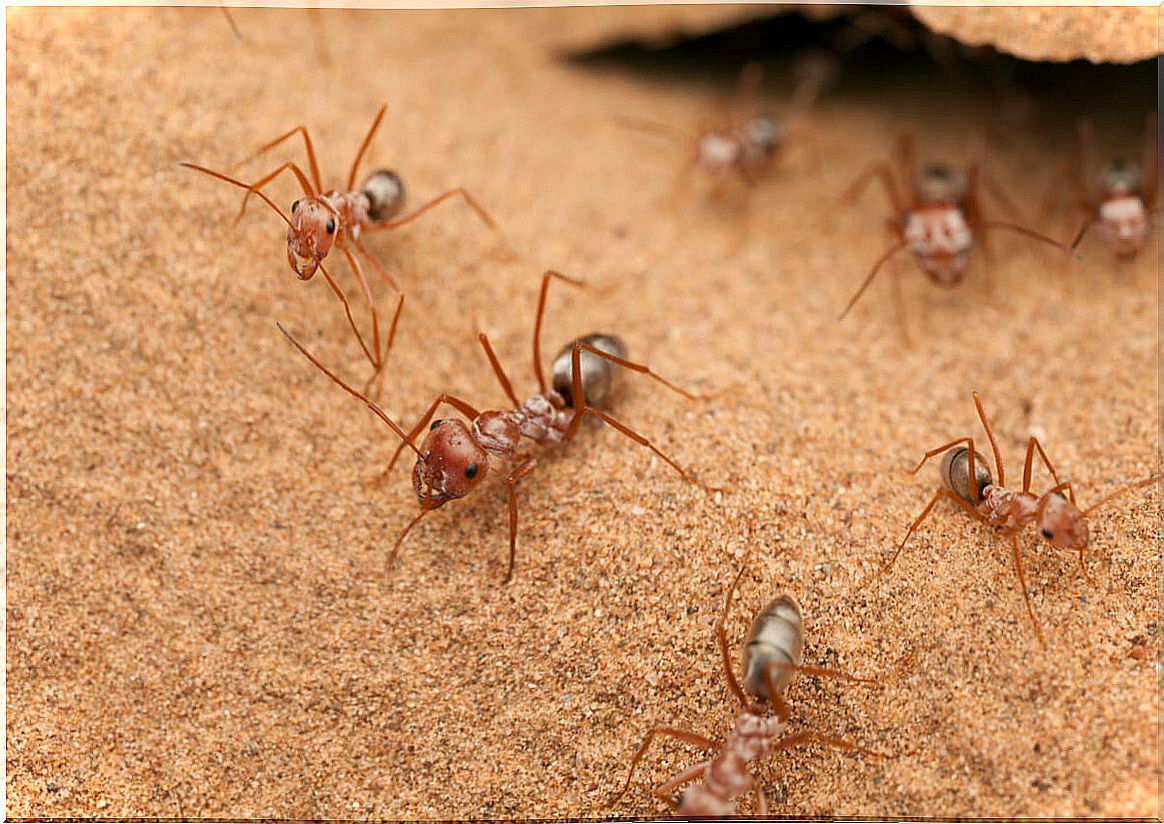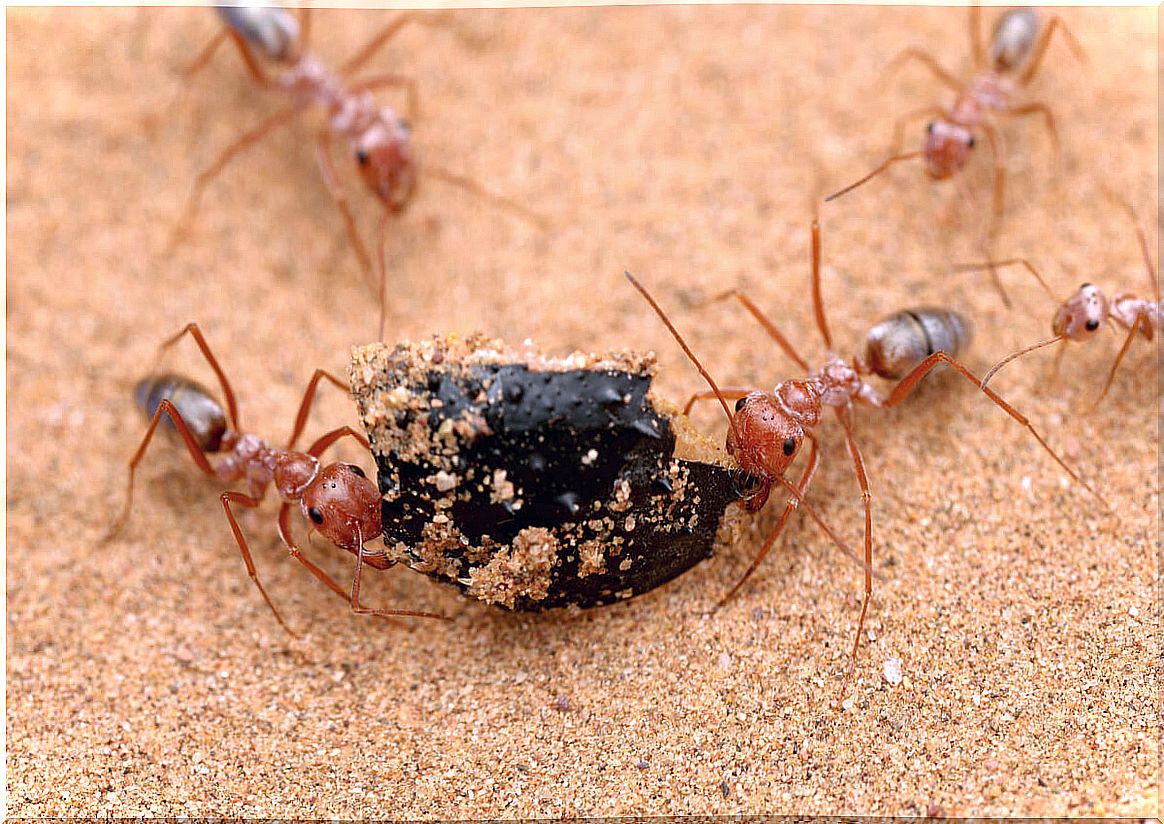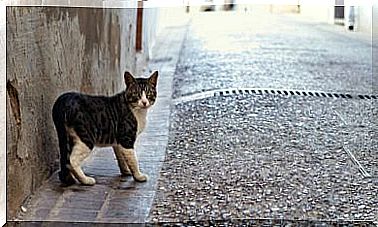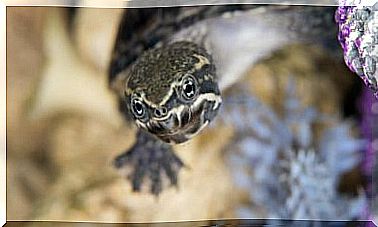Saharan Silver Ants: The Fastest In The World?

Whenever the question arises as to which is the strongest or fastest animal, we think of elephants and cheetahs. As surprising as the answer to this question may seem, when speed is measured in relation to body length per second, a new biological record emerges: among the fastest living things is an ant.
The species that we are showing you today includes a series of prodigious invertebrates: the Saharan silver ants ( Cataglyphis bombycina ). Their speed is 85.4 centimeters per second, but this is not the only striking feature of them.
What makes the speed of the Saharan silver ant record?
Surprisingly, the distance this ant travels in one second corresponds to 108 times the length of its body. By comparison, the cheetah can only travel 16 times its body length per second.
It is worth considering that the record speed of an Olympic athlete in the 100 meter sprint is 10.43 meters per second, which corresponds to 5.5 times his height. If a man could travel at the speed of the Saharan silver ant, his maximum speed would be about 738 kilometers per hour.
In the animal world, the Saharan silver ant ranks in a worthy third place among the fastest. In first place is the California coastal mite ( Paratarsotomus macropalpis ) that travels 322 times its size per second. Second is the Australian tiger beetle ( Cicindela eburneola ), with a speed of 170 times its length per second.

Gait control is vital to maintaining speed
A group of scientists made high-speed videos of ants running in the desert. They concluded that the secret is in the speed and the control of the march. According to this report, Saharan silver ants can swing their legs at speeds of up to 1,300 millimeters per second.
This ability allows them to extend their stride from 4.7 to 20.8 millimeters as they reach higher speeds. It is interesting to know that when the ant exceeds 300 millimeters per second, it synchronizes all 6 legs on the ground at the same time.
The feet were found to make contact with the ground for as little as 7 milliseconds. This could help minimize sinking in the sand. Unfortunately, until now it is not known how the musculature of ants allows them to move at such mind-blowing speeds.
Riding a flat in a hostile environment
It is amazing to learn that Saharan silver ants live and feed under extreme temperature conditions in the African desert. On hot days – with the ground at temperatures of 60 to 70 degrees Celsius – these ants can achieve maximum foraging activities.
Under these conditions, their body temperatures are in the range of 48 to 51 degrees Celsius. Thanks to their physiology, these insects manage to keep their body temperature below the maximum critical temperature, which for them is 53.6 degrees Celsius.
Saharan silver ants have the best gray hair in the world
The name given to these silver ants refers to the fact that they glow in the sun. Recently, scientists have shown that the hairs that cover the dorsal part of the ant’s body are responsible for its silvery appearance.
These hairs are not cylindrical, because if they are cut transversely it is seen that they are triangular and two of their three faces have corrugated surfaces. These surfaces allow high optical reflection of light in the visible and near infrared (NIR) range of the spectrum.
But in addition, these pilosities maximize the reflection of infrared energy, that is, of heat. These two effects explain the remarkable thermoregulatory properties of this species.
The many adaptations of the Saharan silver ant to the desert
These little ants are incredible, especially because of the mechanisms they have developed to adapt to the scorching temperatures of their environment. Among them, we find the following:
- They have longer legs than other ants – this allows them to keep their bodies further away from the scorching sand.
- Their bodies produce heat shock proteins: this expression is not a response to heat, but they possess them even before leaving the nest. This helps them to obtain maximum resistance to heat.
- They can track the sun: so they can always be aware of the shortest route back to the nest.
These ants are covered in unique hairs, with a triangular cross section that keeps their bodies cool by reflecting the sun’s radiation and discharging excess thermal radiation.

Technologists are waiting for the secret of its heat resistance to be elucidated
Without a doubt, the Saharan silver ants found several biological solutions to a thermoregulation problem. Once science elucidates the underlying mechanisms, this knowledge can lead to the development of biomimetic coatings. This could be useful, for example, for passive cooling of objects.









